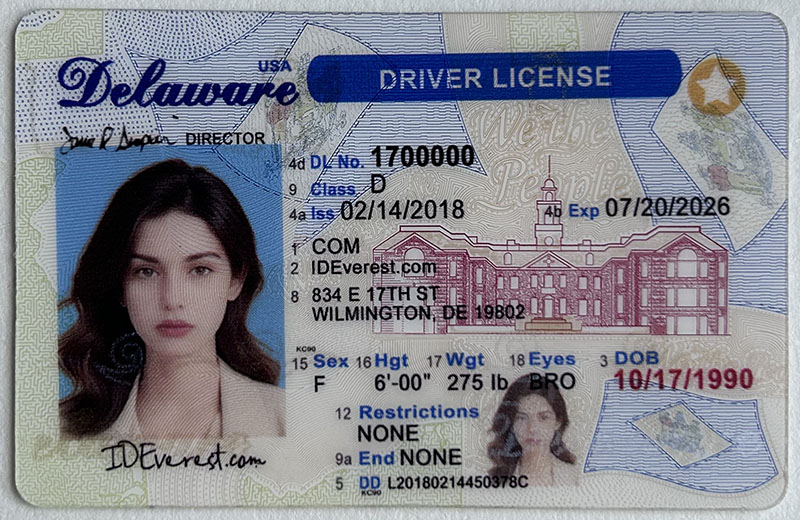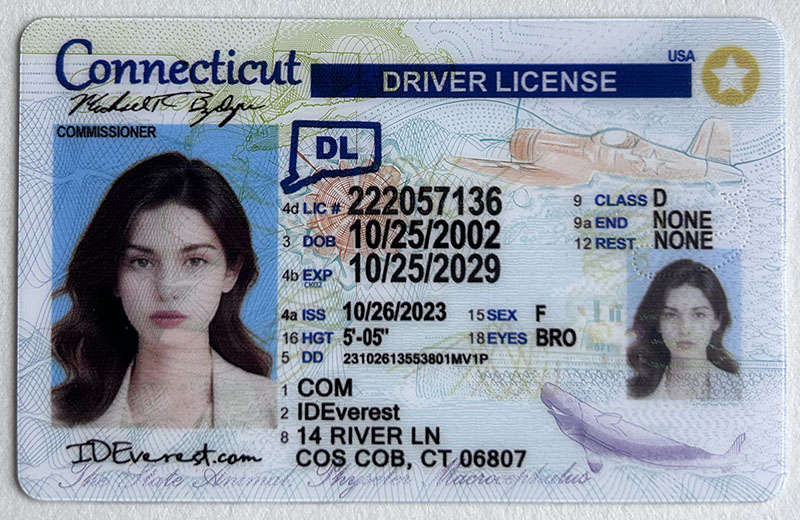Design and Features of U.S. Driver Licenses
Design and Features of U.S. Driver Licenses
In the United States, a driver's license is an important document for personal identification and authorization to drive. While the specific design and features vary from state to state, there are generally some common elements and security measures. This article explores the design, features, and security aspects of U.S. driver licenses.
1. General Design Elements
A. Layout and Size
Standard Size: Most U.S. driver licenses are designed to conform to the standard size of a credit card, typically 3.37 x 2.125 inches. This compact size ensures ease of carrying and handling.
Orientation: The layout is typically horizontal, although some states issue vertical licenses for drivers under a certain age (usually 21 years old).
B. Displayed Information
Personal Information: Information typically displayed includes the driver's full name, photo, date of birth, address, height, weight, eye color, and gender.
License Number: Each license has a unique number assigned to the driver, which is essential for identification and tracking.
Issuing State: The state that issued the license is prominently displayed and often includes a state seal or emblem.
C. Visual Elements
Photo: A clear color photograph of the license holder is one of the most prominent features. The photo is usually taken at the DMV office and is essential for visual identification.
Signature: Includes the driver's signature, usually on the front of the license.
2. Security Features
A. Holograms and Watermarks
Holograms: Many states use holographic images or overlays that are difficult to replicate. These may include state symbols, seals, or complex patterns.
Watermarks: Embedded watermarks are often used to prevent counterfeiting. These may only be visible under certain lighting conditions or when using certain devices.
B. Microprinting and Fine Line Patterns
Microprinting: Various sections of the license contain small text or complex patterns that are difficult to reproduce with a standard printer.
Fine Lines: Security patterns consisting of fine lines or microtext are used to create complex backgrounds that are difficult for counterfeiters to replicate.
C. UV Features
Ultraviolet (UV) ink: Some licenses contain elements that are only visible under ultraviolet light. This feature may reveal additional patterns, text, or symbols.
D. Smart Technology
Barcodes and Magnetic Stripes: Many driver's licenses have a barcode or magnetic stripe on the back. These chips can store encrypted data and can be read by scanning devices.
RFID Chips: Some states are experimenting with RFID (radio frequency identification) technology for added security and convenience. RFID chips can hold encrypted personal data and be used for electronic verification.
3. Differences Across States
A. Design Differences
Each state has its own design that reflects its unique brand and aesthetic preferences. For example, color schemes, logos, and layout elements can vary widely.
Vertical vs. Horizontal: As mentioned earlier, the orientation of driver's licenses can vary. In many states, vertical driver's licenses are issued to drivers under 21, emphasizing that they are not eligible to purchase alcohol.
B. Enhanced Driver's Licenses
REAL ID Act Compliance: In response to the REAL ID Act of 2005, many states have introduced enhanced driver's licenses that meet federal security standards. These licenses often include additional security features and are required for certain federal purposes, such as boarding domestic flights or entering federal buildings.
Enhanced Driver Licenses: Some states offer enhanced driver licenses as proof of identity and citizenship for international travel to Canada and Mexico. These licenses include specific features, such as machine-readable zones and stronger anti-counterfeiting measures.
4. Additional Features
A. Expiration and Renewal
Validity: Most driver licenses are valid for four to eight years, depending on state regulations. The renewal process typically requires updating personal information and may involve passing a vision test or other assessment.
Renewal Notices: Drivers typically receive a notice before their license expires, prompting them to renew before the due date.
B. Special Categories
Commercial Driver License (CDL): For commercial driving, licenses have additional endorsements and restrictions. CDLs may include more extensive personal and vehicle information, as well as specific safety features.
ID Cards: For individuals who do not drive but need proof of identity, many states issue non-driver ID cards with similar safety features as driver licenses.
C. Accessibility Features
Braille: Some states offer Braille on driver licenses to assist the visually impaired. This is an important feature to help ensure accessibility.
Large fonts: To facilitate the visually impaired, some states offer driver's licenses with larger fonts to display personal information.

5. Future Trends
A. Digital Driver's Licenses
Mobile Apps: Future driver's licenses may include digital versions that can be stored and accessed through mobile apps. Some states are exploring or have already implemented digital driver's licenses that provide the same identification and verification features as physical driver's licenses.
Blockchain Technology: Some innovations suggest using blockchain technology to enhance the security and integrity of driver's license data, making it more resistant to tampering and fraud.
B. Enhanced Security Measures
Biometric Data: Future driver's licenses may include biometric data such as fingerprints or iris scans to further enhance security and prevent identity theft.
Advanced Encryption: Improvements in encryption technology can enhance the protection of digital and physical driver's license information.
Conclusion
US driver's licenses, such as the New Mexico fake ID, Washington fake ID, Kansas fake ID, and Tennessee fake ID, are designed to blend practical information with sophisticated security features to ensure that they can achieve the dual purpose of identification and driving authorization. From layout and design to advanced security elements and future trends, these licenses reflect a balance between user accessibility and fraud prevention. As technology advances, we can expect continued enhancements to both the physical and digital forms of these important documents.






 Canada-Quebec DLFake ID
Canada-Quebec DLFake ID
 Scannable Fake Delaware Driver
Scannable Fake Delaware Driver
 EmploymentAuthorization CardFa
EmploymentAuthorization CardFa
 Scannable Fake Connecticut Dri
Scannable Fake Connecticut Dri